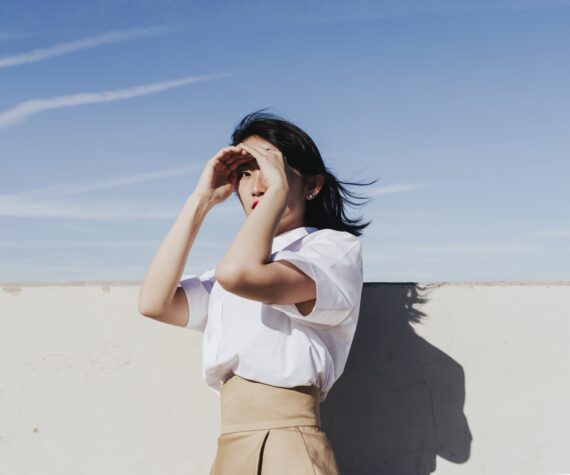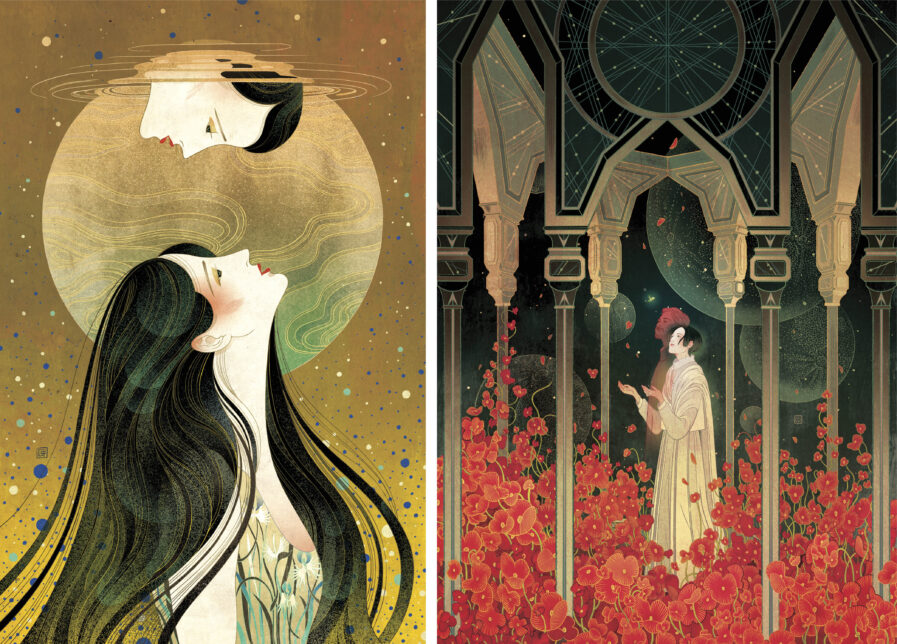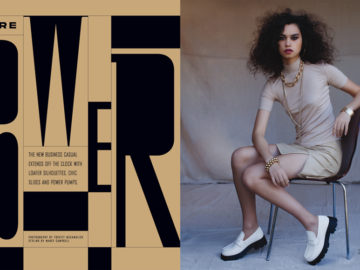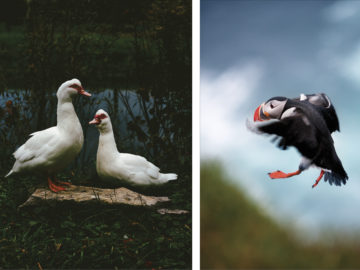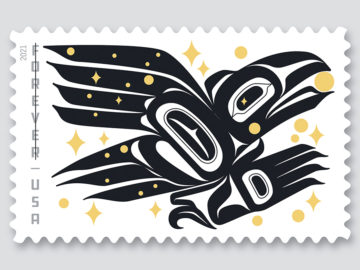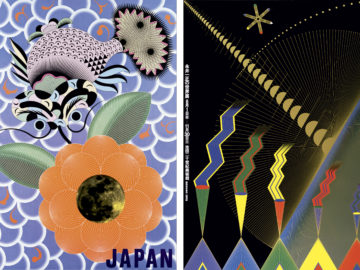Victo Ngai is a beacon of creativity and ingenuity in illustration. Renowned for magical realism, Victo’s illustrations are windows into her soul, revealing layers of honesty, subtlety, humor, and kindness. Each creation intricately blends her cultural identity with a modern narrative, making her a wizard in the art world. Gail Gaynin, co-founder of Morgan Gaynin Inc., introduces Victo in this Graphis Journal magazine Q&A session, celebrating her unique journey and the boundless respect she has garnered. From her early days of exploration at the Rhode Island School of Design to the multifaceted challenges of freelancing, Victo’s story is one of the relentless pursuit of artistic excellence. Through this intimate conversation, delve into the heart of Victo Ngai’s philosophy, her inspirations, and her vision for the future, offering a rare glimpse into her ingenuity.
Introduction by Gail Gaynin, Co-founder, Morgan Gaynin Inc.
If you believe, as I do, that art mimics life, that will explain why Victo Ngai is the real deal. Victo’s art informs the viewer about who she is as a person. Her images are honest, brilliant, subtle, beautiful, funny, and kind-hearted, with unparalleled integrity in her art and content. Often, her art is described as magical realism; in my mind, that relates to the magical real-life wizard that she is and continues to be. When you see one of her creations, the layers continue revealing themselves over time, and you see more with each return to it. And like a mirror of her art, new facets of Victo’s complex, beautiful personality show themselves as time goes by. In Victo’s magical illustration world, she elegantly weaves her delicate line and color with an updated contemporary nod to her cultural identity and a forward vision as a storyteller, solving visual problems and seeking daily new adventures. The respect I have for her is boundless, and I was thrilled when asked to introduce her in this publication.
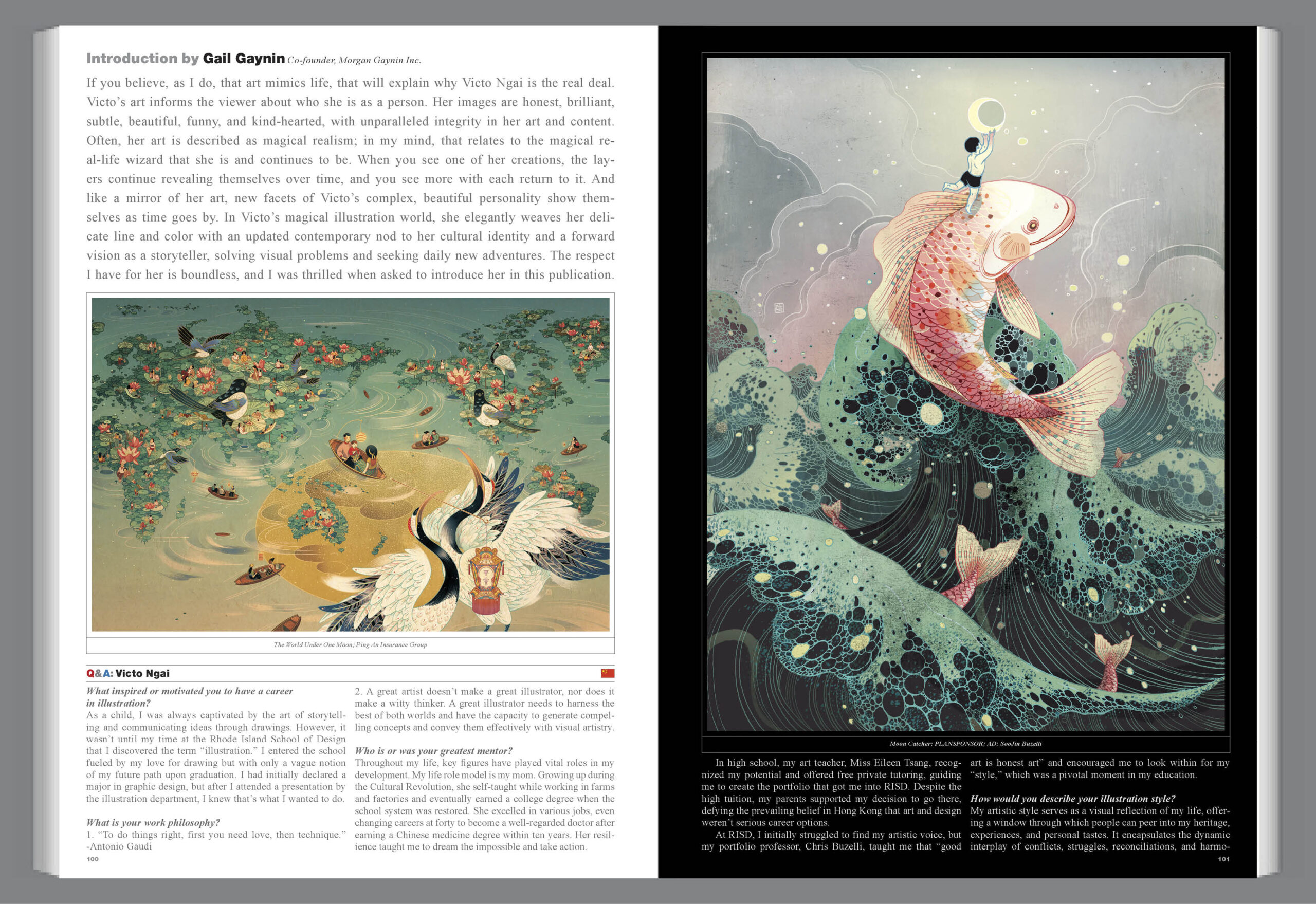
What inspired or motivated you to have a career in illustration?
As a child, I was always captivated by the art of storytelling and communicating ideas through drawings. However, it wasn’t until my time at the Rhode Island School of Design that I discovered the term “illustration.” I entered the school fueled by my love for drawing but with only a vague notion of my future path upon graduation. I had initially declared a major in graphic design, but after I attended a presentation by the illustration department, I knew that’s what I wanted to do.
What is your work philosophy?
1. “To do things right, first you need love, then technique.” -Antonio Gaudi
2. A great artist doesn’t make a great illustrator, nor does it make a witty thinker. A great illustrator needs to harness the best of both worlds and have the capacity to generate compelling concepts and convey them effectively with visual artistry.
Who is or was your greatest mentor?
Throughout my life, key figures have played vital roles in my development. My life role model is my mom. Growing up during the Cultural Revolution, she self-taught while working in farms and factories and eventually earned a college degree when the school system was restored. She excelled in various jobs, even changing careers at forty to become a well-regarded doctor after earning a Chinese medicine degree within ten years. Her resilience taught me to dream the impossible and take action.
In high school, my art teacher, Miss Eileen Tsang, recognized my potential and offered free private tutoring, guiding me to create the portfolio that got me into RISD. Despite the high tuition, my parents supported my decision to go there, defying the prevailing belief in Hong Kong that art and design weren’t serious career options.
At RISD, I initially struggled to find my artistic voice, but my portfolio professor, Chris Buzelli, taught me that “good art is honest art” and encouraged me to look within for my “style,” which was a pivotal moment in my education.
How would you describe your illustration style?
My artistic style serves as a visual reflection of my life, offering a window through which people can peer into my heritage, experiences, and personal tastes. It encapsulates the dynamic interplay of conflicts, struggles, reconciliations, and harmonious fusion between the Eastern and Western influences that have shaped my upbringing.
What is it about illustration that you are most passionate about?
Its ability to convey nuanced emotions, communicate complex ideas, and evoke empathy that transcends language barriers.
You do illustration work for newspapers, magazines, books, storyboards, advertisements, and packaging. Which one is your favorite to work on?
All of them and none of them. I get bored if I only work on one type of project. Each one has its own unique challenges and areas of enjoyment, and that’s why I like to switch things up.
What is the most difficult challenge you’ve had to overcome to reach your current position?
Being a freelancer is not unlike running an entire company, especially in the early stages. There are many hats to wear: CEO, artist, marketing, accounting, PR, and janitor. That means the day-to-day is not always sugar and spice and everything nice; some days it’s more about emails and contracts than drawing. The freelance lifestyle also demands robust self-discipline in both work and play. The lines between work and personal life blur without a set clock-in and clock-out and designated weekends and holidays. Often, social plans take a back seat to deadlines. Now that I have a family, maintaining the balance has become even more challenging, requiring extra diligence and a conscious effort to carve out non-work time.
Perhaps the hardest facet of working under one’s own name is its emotional toll. I am deeply invested in my projects, and my style is an extension of my personal identity. Consequently, rejections or setbacks can carry a unique weight. Likewise, progress and success can feel especially triumphant. It’s not unusual to oscillate between moments of grandeur and periods of self-doubt and even depression within the course of a single project.
What are the top things you need from a client in order to do successful work for them?
I believe that the most important ingredient of a successful collaboration is mutual respect and trust. Clients should trust me to have the creative freedom needed to craft something unique and compelling, while I must have faith in the client’s receptivity to ideas that may deviate from the conventional “safe” path in pursuit of a more interesting solution. This partnership also hinges on respecting each other’s schedules and avoiding unreasonable demands. Open communication is crucial in establishing what’s achievable and what isn’t. The best collaborations resemble a dance—there’s a shared understanding and structure, yet room for spontaneity and play.
What do you consider your greatest professional achievement so far?
I received an email from a student who shared that her parents had read about my story and, as a result, changed their perspective on discouraging her from pursuing art. This experience makes me feel incredibly fortunate. While I’ve primarily focused on pursuing my own interests, I’ve unintentionally and positively influenced others.
What about your work gives you the greatest satisfaction?
Making a living doing what I love. Also, the freedom of working from anywhere and at any time.
What part of your work do you find the most demanding?
The most challenging lesson I’ve learned is that no matter how hard I try, I can’t always hit every piece out of the park, and there’s no such thing as perfection. When I learned that the legendary Joe DiMaggio’s slugging percentage hovers around 0.5-0.6, it provided me with some perspective.
When I was starting out, experimenting was easier because there was nothing to lose. However, with external and internal expectations now in play, I have to remind myself to stay positive and accept that not every piece will be a grand success.
After working for over a decade, I came to realize that a piece is never truly finished. Upon reflecting on my older work, I often find areas for improvement. This is good as it signifies growth as an artist. So, the only thing I can do is to give each piece my best effort while recognizing that step-backs and creative blocks are part of a larger creative process while embracing the beauty of imperfections along the way.
What professional goals do you still have for yourself?
I would love to pursue more cross-disciplinary collaborations, such as creating a capsule collection with a fashion brand and art directing an animated short or music video. Additionally, I am currently authoring my first picture book, which is a whole different kind of beast to tackle but also fulfilling in its own rights.
What advice do you have for students starting out today?
1. Focus on the work you want to do rather than chasing trendy work that you think others would like. Trends come and go quickly, while your work can only grow with you and stand the test of time if it has roots.
2. I resonate with the words of Paul Arden: “It’s not how good you are, it’s how good you want to be.” Success often goes to those who persist and put in the effort, even if they are not the most naturally talented. When you are serious about your craft, time is on your side.
3. Think outside the box, not only in art but also in the pursuit of career opportunities. Reflecting on my past, I had the chance to intern at both The New Yorker and a local ad agency during school. Regrettably, I chose the latter, as the former job description involved only menial tasks like fetching coffee and making copies. In hindsight, this was a missed opportunity. I’ve come to realize that what I make of a situation depends on my initiative. By merely being present in The New Yorker’s office, I could have absorbed insights into the inner workings of a publication by observing and listening. Perhaps I could have established connections and volunteered for small illustration or design tasks. Although I worked with The New Yorker eventually, I wonder if taking that internship would have expedited the process. The same principle applies to commissioned projects. While a client may have specific ideas, it shouldn’t deter artists from pitching more exciting concepts. I recall a client initially wanting just one illustration, but after suggesting a sequential idea, the project expanded threefold. This was a lesson I didn’t grasp as a student—rules are only suggestions.
Where do you find inspiration?
While “inspiration” is commonly likened to a serendipitous lightbulb moment, I view it more as a well-stocked library that can be tapped into when needed. The better our library, the better it can serve us. What we choose to include in our library depends on our tastes and interests, making the curation process vital in developing our artistic style. Equally important is the cultivation of interests beyond our immediate field to avoid echo chamber effects. Having a broad spectrum of interests provides us with a distinct advantage in the realm of inspiration. By expanding our horizons, we invite novel ideas and fresh perspectives to permeate our creative sphere, providing the necessary soil for unique and thoughtful work. The foundation of an artwork is often unseen and predates the project itself.
Where do you see yourself in the future?
I hope I will always want to draw.
How do you define success?
Experiencing the joy of waking up each morning with excitement and going to bed each night feeling thoroughly satisfied.
In what ways do you see your field changing over the years?
From cave paintings to frescoes, tapestries to tablets, and now with AI in the mix, the medium may evolve, but illustration will always be around.
Victo Ngai is an LA-based Forbes “30 Under 30” artist, five-time SOI gold medalist, and the first Chinese artist to win the Hamilton King award. Victo, who hails from Hong Kong, boasts a diverse career spanning picture books, fashion, advertising, packaging, poster art, etc. She has judged professional competitions and lectured in 50+ cities worldwide. Her work has been profiled by The Wall Street Journal, The Independent, Cosmopolitan, Elle, Marie Claire, and more.
Social: Instagram, X, Facebook, LinkedIn
